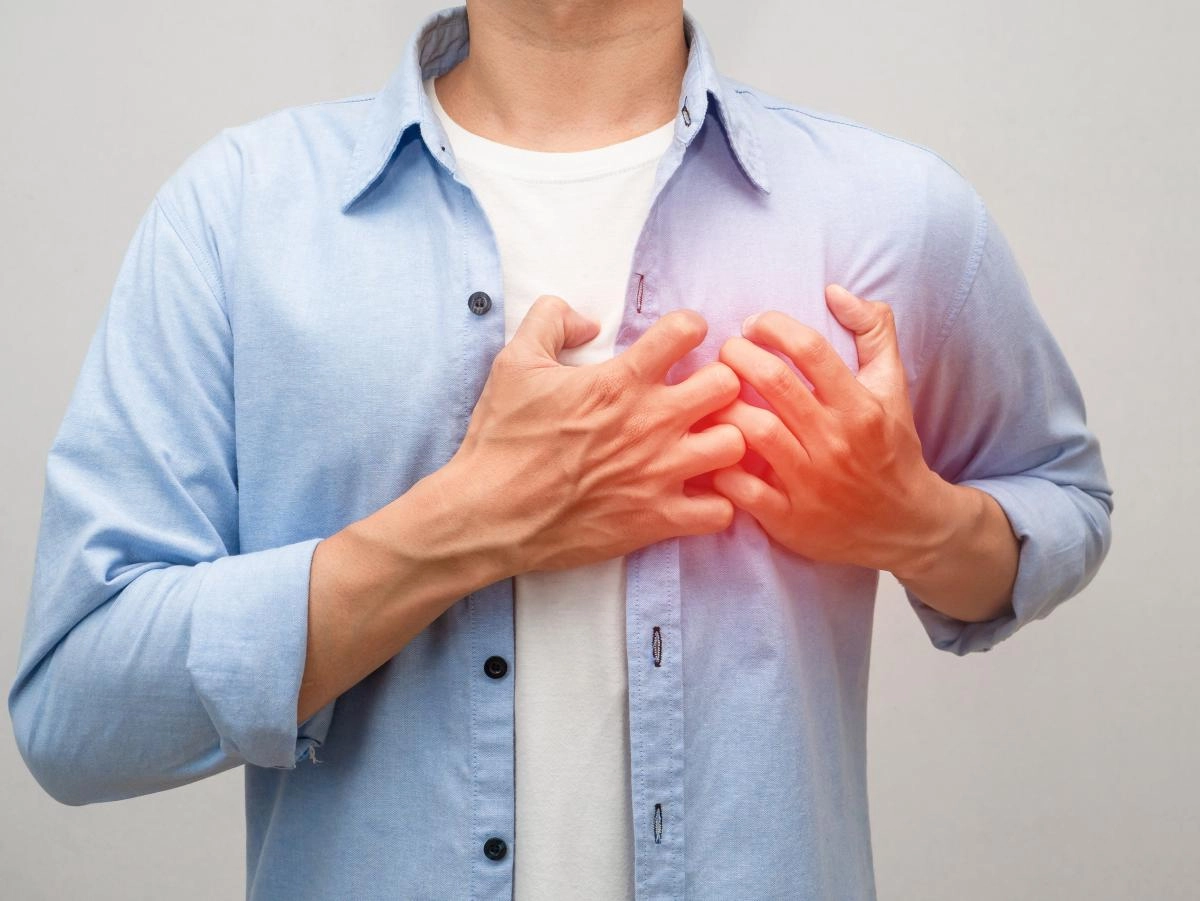8 Signs of an Impending Myocardial Infarction

Photo source: 123rf.com
Everyone should know them, because the time a patient is delivered to a medical facility depends on his life.
Myocardial infarction is now diagnosed in both older people and very young people. And according to forecasts, the number of such patients will increase in the coming years, because stress and anxiety do not go away without leaving a trace.
Currently, medicine has moved forward. Doctors manage to save many people with acute myocardial infarction, provided that the patient is taken to a specialized medical facility where such patients are provided with care.
For what symptoms should you immediately call an ambulance, who is at risk and should monitor their health, how long before a patient with a heart attack should be taken to a specialized medical facility?
What is a heart attack?
Acute myocardial infarction is a pathological condition in which the vessel supplying the heart is blocked and blood flow stops. Accordingly, the area of the heart that is fed by this vessel does not receive oxygen or nutrients and dies (turns into connective tissue-scar).
According to doctors, a heart attack is basically a complication of atherosclerosis of the coronary arteries and coronary heart disease. They are characterized by a gradual narrowing of the lumen of the arteries supplying the myocardium due to an increase in atherosclerotic plaques. It is also possible that the arteries become blocked by blood clots or narrowed as a result of spasm. The risk of developing a heart attack increases: high blood pressure, diabetes, high cholesterol, obesity, smoking, alcohol abuse, and a sedentary lifestyle.
During myocardial infarction, the main thing is to open a closed vessel as quickly as possible. If this is done within two hours, then the heart attack does not have time to cause much damage to the heart muscle. In general, the time from the onset of symptoms and the opening of the vessel should be no more than 6-12 hours. The faster the better. Then time does not work in the patient’s favor: heart cells die, the heart muscle dies, threatening rhythm disturbances and heart rupture occur.
Symptoms of a heart attack that everyone should know
Everyone should know these symptoms, because help may be needed by relatives, friends and strangers who need help. A person’s life often depends on correct actions:
• pain in the chest, squeezing or burning, which lasts more than 15-20 minutes and does not go away after taking nitroglycerin, radiates to the left arm or interscapular area;
• difficulty breathing or sudden shortness of breath;
• sticky cold sweat and pale skin;
• low or high blood pressure;
• palpitations or interruptions in heart function;
• loss of consciousness;
• general weakness is pronounced;
• pain in the stomach, which may be accompanied by nausea, vomiting, pain in the lower jaw or in both elbows (atypical symptoms, do not occur in all cases).
What to do before the ambulance arrives
• help a person sit or lie down, raise the upper body;
• release the chest so that nothing obstructs breathing;
• open the window and provide the patient with access to fresh air;
• do not leave the patient until doctors arrive.
In the event of a myocardial infarction, it is very important to take the person to the nearest medical facility that specializes in the treatment of heart attacks as soon as possible.